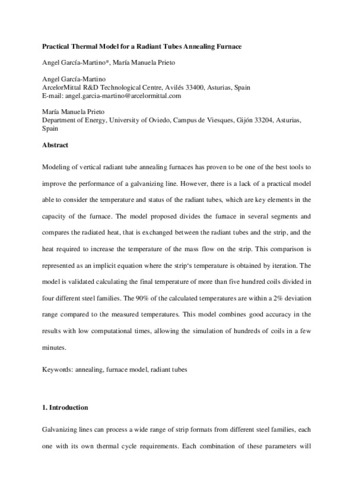Practical thermal model for a radiant tubes annealing furnace
Publication date:
Publisher version:
Citación:
Abstract:
Modeling of vertical radiant tube annealing furnaces has proven to be one of the best tools to improve the performance of a galvanizing line. However, there is a lack of a practical model able to consider the temperature and status of the radiant tubes, which are key elements in the capacity of the furnace. The model proposed divides the furnace in several segments and compares the radiated heat, that is exchanged between the radiant tubes and the strip, and the heat required to increase the temperature of the mass flow on the strip. This comparison is represented as an implicit equation where the strip's temperature is obtained by iteration. The model is validated calculating the final temperature of more than five hundred coils divided in four different steel families. The 90% of the calculated temperatures are within a 2% deviation range compared to the measured temperatures. This model combines good accuracy in the results with low computational times, allowing the simulation of hundreds of coils in a few minutes.
Modeling of vertical radiant tube annealing furnaces has proven to be one of the best tools to improve the performance of a galvanizing line. However, there is a lack of a practical model able to consider the temperature and status of the radiant tubes, which are key elements in the capacity of the furnace. The model proposed divides the furnace in several segments and compares the radiated heat, that is exchanged between the radiant tubes and the strip, and the heat required to increase the temperature of the mass flow on the strip. This comparison is represented as an implicit equation where the strip's temperature is obtained by iteration. The model is validated calculating the final temperature of more than five hundred coils divided in four different steel families. The 90% of the calculated temperatures are within a 2% deviation range compared to the measured temperatures. This model combines good accuracy in the results with low computational times, allowing the simulation of hundreds of coils in a few minutes.
Patrocinado por:
Arcelor-Mittal
Files in this item





